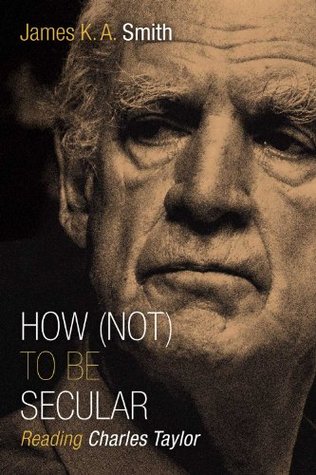More on this book
Community
Kindle Notes & Highlights
Read between
April 5 - August 3, 2019
ethnographer
“secular”
sense that rival stories are always at the door offering a very different account of the world
Ardor and devotion cannot undo the shift in plausibility structures that characterizes our age.
There’s no undoing the secular; there’s just the task of learning how (not) to live — and perhaps even believe — in a secular age.
ardent secularism
a sense of something more
create an insulated panic room
Ours is a “secular” age, according to Taylor, not because of any index of religious participation (or lack thereof), but because of these sorts of manifestations of contested meaning.
It’s as if the cathedrals are still standing, but their footings have been eroded.
almost suffocating immanence, a flattened human universe where the escapes are boredom and distraction, not ecstasy and rapture.18
God is dead, but he’s replaced by everybody else.
Everything is permitted, but everybody is watching. So most of the time the best “salvation” we can hope for is found in behaviors that numb us to this reality: drugs, sex, entertainments of various sorts.
Legion),
Wake up and smell the disenchantment.
It is this sort of contested, cross-pressured, haunted world that is “secular” — not a world sanitized of faith and transcendence, flattened to the empirical.
a shift in the plausibility conditions
“How did we move from a condition where, in Christendom, people lived naïvely within a theistic construal, to one in which we all shunt between two stances, in which everyone’s construal shows up as such; and in which moreover, unbelief has become for many the major default option?”30 (p. 14)
“Why was it virtually impossible not to believe in God in, say, 1500 in our Western society, while in 2000 many of us31 find this not only easy, but even inescapable?” (p. 25)
what is believable.
default assumptions about what is believable.
fixate on expressions of belief
conditions of belief.
Taylor’s threefold taxonomy of “secular.”
secularization theory, as
one option among others,
mean by this a humanism accepting no final goals beyond human flourishing,
nor any allegiance to anything else beyond this flourishing.
How does this change in the “conditions” of belief impact the way we proclaim and teach the faith?
“subtraction stories” of secularization theory, those tales of enlightenment and progress and maturation that see the emergence of modernity and “the secular” as shucking the detritus of belief and superstition.
“narrative animals”:
“dialectical
The emergence of the secular is also bound up with the production of a new option — the possibility of exclusive humanism as a viable social imaginary
way of constructing meaning and significance without any reference to the divine or transcendence. So it wasn’t enough for us to stop believing in the gods; we also had to be able to imagine significance within an immanent frame, to imagine modes of meaning that did not depend on transcendence. This is why “subtraction stories” of the sort offered by secularization theory will always fall short. The secular is not simply a remainder; it is a sum, created by addition, a product of intellectual multiplication.
the way we naïvely take things to be.
Significance no longer inheres in things; rather, meaning and significance are a property of minds who perceive meaning internally.
“in the enchanted world, the line between personal agency and impersonal force was not at all clearly drawn” (p. 32). There is a kind of blurring of boundaries so that it is not only personal agents that have causal power (p. 35). Things can do stuff.
Reform: The Fulcrum of Modernity
rubric
it’s the family history we need to make sense of the 1960s — the decade we’ve never left.
1968
1518.
“two-tiered” distortion
either because more is going to be expected of society in terms of general sanctification, or because less is going to be expected and self-transcendence will be simply eclipsed.
you can either focus on helping people reach higher or you can lower the bar.
This is why Reform unleashes both Puritanis...
This highlight has been truncated due to consecutive passage length restrictions.
Reform is a reaction to this disequilibrium, it can seek to “solve” the problem i...
This highlight has been truncated due to consecutive passage length restrictions.
there is a leveling at work here.
coram Deo,
Domestic life is affirmed as a sphere of grace.


